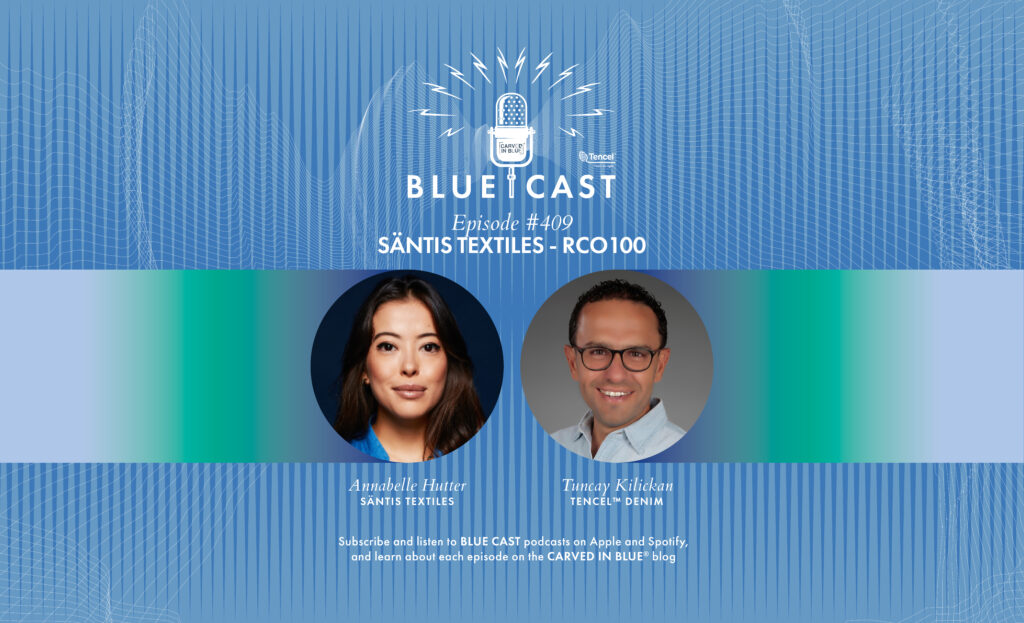
Blue Cast: Säntis Textiles’ Annabelle Hutter on Quality Over Quantity in Recycling

In a fashion industry that increasingly favors fast production, Säntis Textiles has advanced textile-to-textile recycling by slowing things down.
The company’s RCO100 technology, first launched in 2016, allows for the creation of yarns with 100 percent recycled cotton. A gentler mechanical recycling process leaves fibers longer, maintaining a 26-millimeter length. Any fibers that are too short to be suitable for textile products get filtered out for other uses.
“The machine is special because it actually runs a lot slower than the other recycling machines. And the productivity is not based on quantity, it’s based on quality, versus all the recycling machines which are running very fast, they run very aggressively,” Annabelle Hutter, managing director of Säntis Textiles, told Lenzing’s Tuncay Kilickan during the latest episode of our Blue Cast podcast.
Säntis Textiles got its start in recycling back in 2010 with recycled polyester. The family-owned firm created technology that allowed polyester chips to be spun into yarn without the need for a thermal process.
The spark for cotton recycling came after Annabelle’s father, Säntis Textiles owner Stefan Hutter, met the then-CEO of Tommy Hilfiger and PVH Europe while skiing. After hearing about the polyester recycling, the fashion CEO asked about doing the same with cotton. Stefan did research and built a prototype machine. By 2019, Säntis Textiles was able to do 100 percent recycled cotton denim, which went commercial with PVH.
Today, the prototype sits in Kipas’ factory in Turkey. In 2021 and 2022, Stefan began working on developing a salable model of the RCO100, and this second version was presented at the ITMA show in Milan this June.
The mind behind the machine, Stefan previously worked at textile machinery company Saurer, as did his father. “[My father and grandfather] learned really by working in the field, and directly with these technologies,” said Annabelle. “I’m really inspired by that.”
In addition to creating a commercial model, Stefan has introduced new features to the machine, such as a dosing module for FibreTrace’s traceable pigments.
So far, to achieve the long fiber length, Säntis Textiles has only been using pre-consumer sources, including industrial waste from bed linen production. However, Annabelle has been seeing an uptick of interest in post-consumer recycling. She noted that if a company wanted to start testing the feasibility of fine yarn production with post-consumer materials on the machine, the process would begin with blending a smaller amount of post-consumer with industrial waste and then increasing the portion of PCW.
The RCO100 can recycle more than just cotton, including cotton-poly blends. However, what goes in comes out, and it retains all the fiber content. In an ideal world, Annabelle explained, blends would be a thing of the past. “Can we just stop using these nasty blends?” she said. “Of course, it’s still out there and it’s still going to be out there because when you talk about mass economics to do with how people consume, you can’t actually logically make everyone buy mono fibers, but I believe that mono fibers are fabulous.”
Listen to the episode here.






